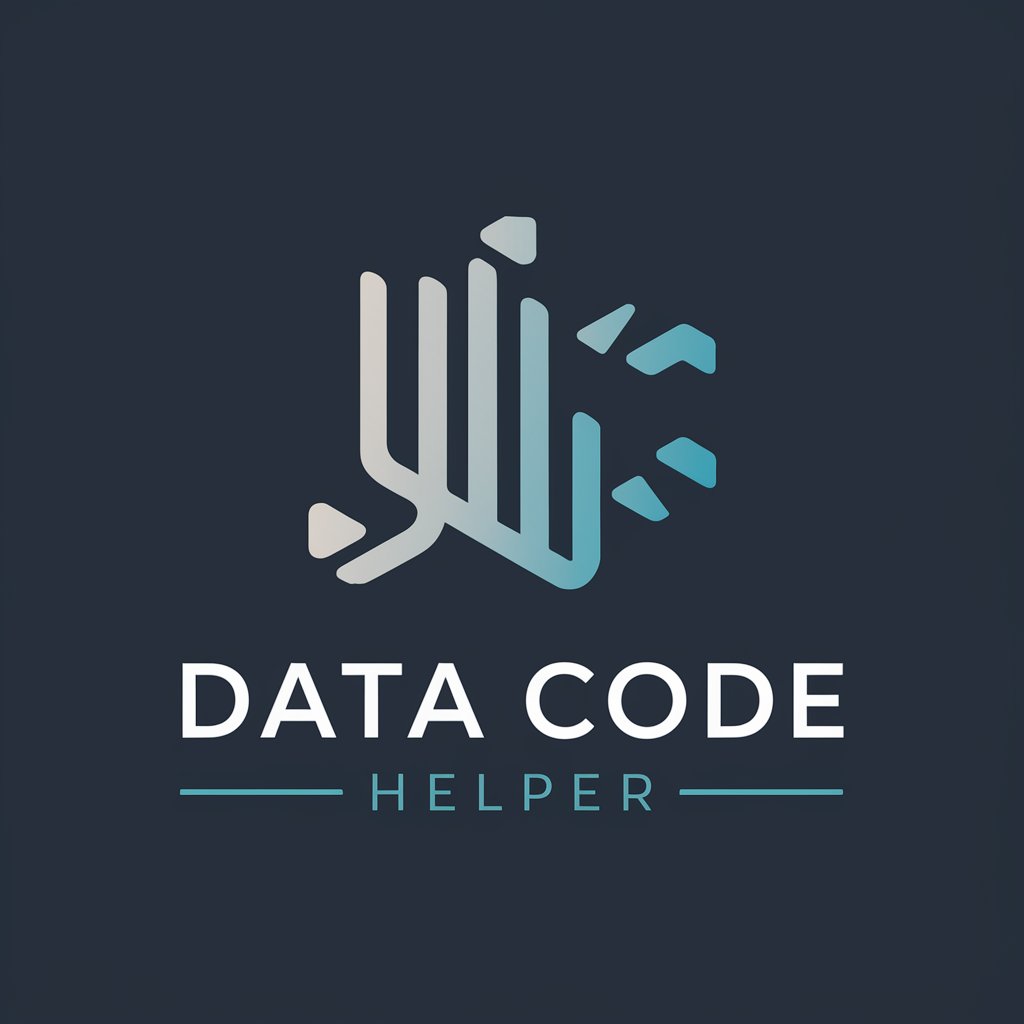
Machine Learning-AI tool for ML tasks
AI-powered tool for smarter ML solutions

The most advanced, sophisticated, intelligent, and complete Machine Learning expert.
📊 How to use pandas to analyze data?
🧠 Explain me how neural networks work
✅ Troubleshoot this issue in my code
💡 Teach me something new about ML
Get Embed Code
Machine Learning Overview - Introduction to Machine Learning
Machine Learning (ML) is a subset of artificial intelligence (AI) that focuses on building systems thatJSON Error Correction can learn from data and improve their performance over time without being explicitly programmed. The core idea behind ML is to use algorithms to identify patterns within data, which can then be used for decision-making or predictions. ML systems 'learn' from training data, allowing them to make inferences and predictions based on previously unseen data. This approach contrasts with traditional programming, where rules are explicitly coded by a human programmer. ### Key Concepts: 1. **Supervised Learning**: The algorithm learns from labeled data, predicting outcomes for new data based on the learned patterns (e.g., predicting house prices based on historical sales data). 2. **Unsupervised Learning**: The algorithm identifies patterns in data without labeled outcomes (e.g., grouping customers based on purchasing behavior). 3. **Reinforcement Learning**: The system learns by interacting with an environment and receiving feedback through rewards or penalties (e.g., training a robot to navigate through a maze). ### Example Scenario: Consider an e-commerce company using ML for recommending products. The algorithm learns from past user behavior andJSON Error Fix product interactions, adjusting recommendations over time to improve relevance.
Main Functions of Machine Learning
Prediction and Forecasting
Example
Predicting stock market trends or weather forecasts.
Scenario
In the financial industry, machine learning models are often used to forecast stock prices based on historical data. A supervised learning algorithm like Linear Regression or more advanced models like Long Short-Term Memory (LSTM) networks can analyze past stock movements and predict future trends. These models can help investors make more informed decisions.
Classification
Example
Email spam detection or medical diagnosis.
Scenario
In a healthcare setting, a machine learning model can be trained to classify medical images, such as X-rays or MRI scans, to detect potential diseases like cancer. This process uses supervised learning, where labeled images of diseased and healthy conditions are used to train a model that can predict the presence of disease in new, unseen scans.
Clustering and Grouping
Example
Customer segmentation for targeted marketing.
Scenario
E-commerce businesses often use unsupervised learning algorithms like k-means clustering to group customers based on purchasing behavior. These clusters can be used to target specific marketing campaigns to particular customer segments, increasing the chances of a successful conversion rate.
Anomaly Detection
Example
Fraud detection in banking or cybersecurity.
Scenario
In cybersecurity, ML algorithms can be used to detect abnormal patterns of network traffic, potentially signaling a cyberattack. Anomaly detection models use past network behavior as a baseline, and any deviations from this baseline are flagged for further investigation.
Recommendation Systems
Example
Product recommendations on e-commerce websites.
Scenario
Streaming services like Netflix or Spotify use collaborative filtering and content-based algorithms to recommend movies, shows, or music based on users' preferences. The system learns from users' past interactions, such as watched shows or liked songs, to suggest new content they might enjoy.
Ideal Users of Machine Learning
Data Scientists and Engineers
These users benefit from ML because they require powerful tools to analyze large datasets, find insights, and build predictive models. ML provides them with the ability to automate decision-making processes and improve models over time with more data. They typically work with complex datasets and need algorithms that can scale and adapt. Examples of tools they may use include TensorFlow, Scikit-learn, and PyTorch.
Business Analysts and Decision-Makers
ML helps these professionals by offering data-driven insights and predictive capabilities that enhance decision-making. Business analysts can leverage ML models to understand customer behaviors, forecast future trends, and optimize strategies in real-time. This is crucial in industries like finance, retail, and healthcare, where timely and accurate decisions can directly impact business outcomes.
Software Developers and Engineers
Developers can integrate machine learning models into applications to add intelligent features such as chatbots, recommendation engines, or predictive analytics. ML APIs like Google Cloud AI or Azure ML provide developers with easy-to-use interfaces to embed complex models without needing deep knowledge in statistics or data science.
Healthcare Providers
Machine learning can assist doctors and healthcare professionals by providing tools for medical image analysis, patient monitoring, and predictive diagnostics. For instance, ML models are being used to predict patient outcomes, suggest treatments, and even recommend interventions based on historical health data.
Retail and E-commerce Businesses
ML plays a key role in personalizing customer experiences. Retailers use ML for inventory management, fraud detection, and customer segmentation. E-commerce platforms use recommendation engines to suggest products to customers based on their browsing history and previous purchases, leading to higher customer engagement and sales.
How to Use Machine Learning Effectively
Step JSON Code Correction1: Get Started Instantly
Visit aichatonline.org for a free trial without login, also no need for ChatGPT Plus. This allows you to immediately access an AI-powered tool to explore Machine Learning without commitment.
Step 2: Define Your Objective
Clarify what you want to achieve: classification, regression, clustering, recommendation, or prediction. This defines your dataset requirements, algorithm choice, and evaluation metrics.
Step 3: Prepare and Explore Your Data
Collect relevant data, clean it (handle nulls, outliers), and perform exploratory data analysis (EDA) using tools like pandas, seaborn, or matplotlib to uncover patterns and correlations.
Step 4: Train and Evaluate Models
Select and implement algorithms (e.g., Random Forest, XGBoost, Neural Networks) using libraries like scikit-learn, TensorFlow, or PyTorch. Split data into train/test sets and evaluate performance using metrics such as accuracy, F1-score, or AUC-ROC.
Step 5: Optimize ML Usage and Q&A and Deploy
Try other advanced and practical GPTs
Esquematizador
AI-powered structured summaries in seconds.

MIT App Inventor 2 App Maker
AI-powered app creation for beginners.

Travel Guide 🤠 Itinerary and Trip Planner
AI-powered trip planning with real-time suggestions

Glibatree Consistent Character Assistant
Create and maintain consistent character designs with AI.

日本語中国語相互翻訳機
AI-powered tool for precise Japanese-Chinese translation

Excel Generator
AI-powered Excel generator for smart automation

Pathfinder 2e Remastered Guide
AI-Powered Pathfinder Remastered Rules Expert

System Prompt Generator
Generate expert-level prompts powered by AI.

MBTI性格測試專家
Discover Your Personality with AI-Powered Insight

Contract, Agreement, Law (Not a Lawyer)
AI-powered Legal Document Generator

Practise English by Debating
Debate to Improve English with AI

Orion
Empowering Conversations with AI Insight

- Speech Recognition
- Customer Segmentation
- Image Classification
- Fraud Detection
- Predictive Analytics
Comprehensive Machine Learning Q&A
What types of problems can Machine Learning solve?
Machine Learning can solve problems in prediction (stock prices, sales forecasting), classification (spam detection, disease diagnosis), clustering (customer segmentation), recommendation (Netflix, Amazon), and anomaly detection (fraud detection, system failures).
Do I need to know programming to use Machine Learning?
While low-code platforms exist, knowledge of Python is highly recommended. Libraries such as scikit-learn, TensorFlow, and PyTorch allow for full control, customization, and integration into real-world applications.
How do I choose the right algorithm for my project?
It depends on your data and task type. For structured/tabular data, tree-based models like XGBoost work well. For image or text, use deep learning (CNNs, RNNs, Transformers). Always test multiple algorithms and use cross-validation for selection.
What is overfitting and how can I prevent it?
Overfitting occurs when a model learns noise instead of patterns, performing well on training data but poorly on unseen data. Prevent it with techniques like regularization (L1/L2), dropout (in deep learning), cross-validation, and early stopping.
How can I deploy my ML model for users to interact with?
You can deploy models using REST APIs (FastAPI, Flask), integrate them in apps (streamlit, Gradio), or host them in cloud environments like AWS, GCP, or Azure. Dockerization and CI/CD pipelines ensure scalability and reliability.






